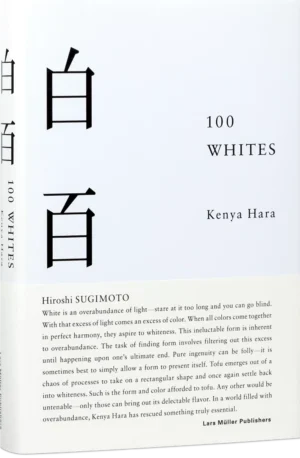di Wang Shaoqiang
EAT & GO. Branding & Design for Takeaways & Restaurants
Eat & Go reveals the endless creative possibilities of designing packaging for takeaway food. From balancing aesthetic considerations against efficiency to conveying a restaurants brand image in an appealing way, designers working in this field face many fascinating challenges. Through more than one hundred beautifully illustrated projects, this book offers creative food for thought for designers, marketing professionals and gourmets alike.
“Restaurants and other food outlets that other takeaway services are actively gaining customers. This is especially evident in major metropolitan areas, where every second commuter is in a hurry to get somewhere. We no longer have time for leisurely walks, long lunches or sitting down for a cup of coffee.
Increased competition and a different kind of communication with the customer require a completely different approach to branding in this area. Brand-design options are no longer limited to creating signs and menus. They must attract the consumer in the midst of all the turmoil that constantly prevails in the life of a person living in a busy city.
The packaging design of takeaway products is also very important. Branding of takeaway restaurants is different from that of classic sit-in restaurants, and revolves round a distinct set of issues. To get the customer’s attention it needs to be extraordinary, but it should not be too eccentric, since often the customer will eat their food directly out of this packaging.
Humans are emotional creatures. Every day we look for new feelings and experiences, even though this need is not as prominent as the sensation of hunger. It is not surprising that brands with a deeply emotional design are becoming very popular. Buying food or drink to take away is a spontaneous process, and decision making in this situation is governed by the customer’s emotions.
We also need to keep in mind the fact that hunting for food is one of the basic survival instincts. Any information related to food is analysed in a part of our brain that was programmed millions of years ago. Before we have managed to consciously decide if we want this snack or not our brain already knows it’s not going to happen because it smells bad or looks wrong. Exactly how wrong? “I don’t know, but trust me: it’s not worth it!” this ancient part of our brain tells us, and we listen to it because ignoring it may cost us dear. And you have to admit, after millions of years our brain is still pretty good at knowing how to define food that’s fit to eat.
&hellipThousands of designers and agencies worldwide are working on all of these questions—and hundreds of others—on a daily basis. This book takes you into their world, revealing the conundrums faced by designers and the creative solutions they’ve come up with when working in this fascinating field.” – From the foreword by Danil Snitko (Art Director at Punk You Brands Branding Agency, Russian Federation)
> Wang Shaoqiang is a professor and graduate supervisor at the Guangzhou Academy of Fine Arts (China). He is a prolific editor whose titles focus on international design, architecture, branding, communication, trends, and culture, and he is also the editor of Design 360° magazine and Asia-Pacific Design. He has been invited to lecture at numerous universities, design academies, and organizations, and he has been a jury member for China’s most prestigious design and illustration awards. Mr. Wang is also director of the Guangdong Museum of Art and professor and doctoral supervisor at the College of Arts and Humanities of the Macau University of Science and Technology.
> Danil Snitko (Preface by) is art director and co-founder of the PUNK YOU BRANDS branding agency, located in Barnaul, Siberia, Russia. He holds a Master of Law degree, but has chosen design and advertising as profession. He does different stuff in his agency – setting up creative processes, improving team skills, taking part in some education activities. He is producer and co-founder of FAKESTIVAL – the International Festival of Advertising and Design Concepts.
Veste editoriale: Brossura
Formato: 21×28
Pagine: 240
Immagini a colori:
Immagini b/n:
Lingua: GB-E-F-P
Anno: 2017
ISBN: 9788416504916
Potrebbero interessarti anche:
Prodotti correlati
-
In Offerta
ATLAS OF INTERIOR DESIGN
98,00 €Il prezzo originale era: 98,00 €.89,00 €Il prezzo attuale è: 89,00 €. Aggiungi al carrello -
ANDREW MARTIN. Interior Design Review Vol.24
78,00 € Aggiungi al carrello -
ANDREW MARTIN. Interior Design Review Vol.23
78,00 € Aggiungi al carrello -
100 WHITE
40,00 € Aggiungi al carrello
di Wang Shaoqiang
EAT & GO. Branding & Design for Takeaways & Restaurants
Eat & Go reveals the endless creative possibilities of designing packaging for takeaway food. From balancing aesthetic considerations against efficiency to conveying a restaurants brand image in an appealing way, designers working in this field face many fascinating challenges. Through more than one hundred beautifully illustrated projects, this book offers creative food for thought for designers, marketing professionals and gourmets alike.
“Restaurants and other food outlets that other takeaway services are actively gaining customers. This is especially evident in major metropolitan areas, where every second commuter is in a hurry to get somewhere. We no longer have time for leisurely walks, long lunches or sitting down for a cup of coffee.
Increased competition and a different kind of communication with the customer require a completely different approach to branding in this area. Brand-design options are no longer limited to creating signs and menus. They must attract the consumer in the midst of all the turmoil that constantly prevails in the life of a person living in a busy city.
The packaging design of takeaway products is also very important. Branding of takeaway restaurants is different from that of classic sit-in restaurants, and revolves round a distinct set of issues. To get the customer’s attention it needs to be extraordinary, but it should not be too eccentric, since often the customer will eat their food directly out of this packaging.
Humans are emotional creatures. Every day we look for new feelings and experiences, even though this need is not as prominent as the sensation of hunger. It is not surprising that brands with a deeply emotional design are becoming very popular. Buying food or drink to take away is a spontaneous process, and decision making in this situation is governed by the customer’s emotions.
We also need to keep in mind the fact that hunting for food is one of the basic survival instincts. Any information related to food is analysed in a part of our brain that was programmed millions of years ago. Before we have managed to consciously decide if we want this snack or not our brain already knows it’s not going to happen because it smells bad or looks wrong. Exactly how wrong? “I don’t know, but trust me: it’s not worth it!” this ancient part of our brain tells us, and we listen to it because ignoring it may cost us dear. And you have to admit, after millions of years our brain is still pretty good at knowing how to define food that’s fit to eat.
&hellipThousands of designers and agencies worldwide are working on all of these questions—and hundreds of others—on a daily basis. This book takes you into their world, revealing the conundrums faced by designers and the creative solutions they’ve come up with when working in this fascinating field.” – From the foreword by Danil Snitko (Art Director at Punk You Brands Branding Agency, Russian Federation)
> Wang Shaoqiang is a professor and graduate supervisor at the Guangzhou Academy of Fine Arts (China). He is a prolific editor whose titles focus on international design, architecture, branding, communication, trends, and culture, and he is also the editor of Design 360° magazine and Asia-Pacific Design. He has been invited to lecture at numerous universities, design academies, and organizations, and he has been a jury member for China’s most prestigious design and illustration awards. Mr. Wang is also director of the Guangdong Museum of Art and professor and doctoral supervisor at the College of Arts and Humanities of the Macau University of Science and Technology.
> Danil Snitko (Preface by) is art director and co-founder of the PUNK YOU BRANDS branding agency, located in Barnaul, Siberia, Russia. He holds a Master of Law degree, but has chosen design and advertising as profession. He does different stuff in his agency – setting up creative processes, improving team skills, taking part in some education activities. He is producer and co-founder of FAKESTIVAL – the International Festival of Advertising and Design Concepts.
Veste editoriale: Brossura
Formato: 21×28
Pagine: 240
Immagini a colori:
Immagini b/n:
Lingua: GB-E-F-P
Anno: 2017
ISBN: 9788416504916
Potrebbero interessarti anche:
Prodotti correlati
-
In Offerta
ATLAS OF INTERIOR DESIGN
98,00 €Il prezzo originale era: 98,00 €.89,00 €Il prezzo attuale è: 89,00 €. Aggiungi al carrello -
ANDREW MARTIN. Interior Design Review Vol.25
78,00 € Aggiungi al carrello -
In Offerta
ANDREW MARTIN. Interior Design Review Vol.19
110,00 €Il prezzo originale era: 110,00 €.99,00 €Il prezzo attuale è: 99,00 €. Aggiungi al carrello -
ANDREW MARTIN. Interior Design Review Vol.15
89,00 € Aggiungi al carrello
FAQ
Leggi le domande frequenti per avere maggiori informazioni sui metodi di pagamento, la spedizione e molto altro
Per acquistare uno o più libri è sufficiente compilare l’apposito modulo al quale si accede dalla scheda di ciascun libro.
Qualora i volumi ordinati non siano tutti immediatamente disponibili, il nostro staff si riserva di contattarti via mail per concordare le modalità di spedizione (A: invio immediato dei volumi presenti a magazzino e successivo invio di quelli mancanti – B. invio unico dopo il ricevimento da parte nostra dei volumi mancanti).
N.B. la fattura deve essere esplicitamente richiesta al momento dell’ordine, comunicando la ragione sociale completa di partita IVA e/o Codice Fiscale e Codice SDI.
Ai sensi dell’Art.5 del relativo Decreto, l’acquirente ha il diritto di recedere dal contratto e restituire i volumi ordinati entro 10 giorni lavorativi, purchè nel medesimo stato in cui li ha ricevuti. Il diritto di recesso dovrà essere esercitato mediante invio di lettera raccomandata A.R. a: LIMOND S.a.s. – via Arnolfo di Cambio 24/A – 37138 Verona (VR) – entro il termine di 10 (dieci) giorni lavorativi dal ricevimento dei volumi.
Tutti i resi dovranno essere autorizzati da Limond S.a.s (tel. +393472455641) con l’assegnazione di un numero di autorizzazione alla resa. Le spese di spedizione saranno interamente a carico del cliente e non si accetteranno pacchi in contrassegno.
Al ricevimento dei volumi, e verificata la loro integrità, Limond S.a.s. provvederà, entro 10 (dieci) giorni, ad accreditare il cliente del valore dei volumi restituiti.
La tempestività nell’evasione dell’ordine è determinata dalla disponibilità della merce ordinata. In caso di immediata disponibilità l’ordine verrà evaso entro 2 giorni lavorativi. Qualora uno o più libri non dovessero essere presenti a magazzino possono essere ordinati su richiesta; il nostro staff informerà il cliente, via mail, circa i tempi necessari per l’evasione dell’ordine.
Pagamento tramite bonifico bancario anticipato alle coordinate comunicate in fase di check-out
I costi di invio (che comprendono imballo e spedizione) per libri e riviste in ITALIA sono i seguenti:
Servizio postale: 3-5 gg (per merce immediatamente disponibile presso il nostro magazzino)
- Spedizioni per acquisti fino a 62,00€: €5,50
- Spedizioni per acquisti fino a 120,00€: €9,50
- Spedizioni per acquisti superiori a 120,00€: Gratuite
Per una quotazione dei costi di invio in EUROPA o per spedizioni internazionali vengono richiesti i seguenti dati:
- Nome/Cognome
- Indirizzo (comprensivo di Codice postale)
- Telefono (meglio se Cellulare)
Alla conferma di accettazione, verranno comunicate coordinate bancarie/account PayPal da utilizzare per il pagamento. Un Una volta ricevuto, verrà evasa la spedizione inoltrando notifica e tracciabiltà.








